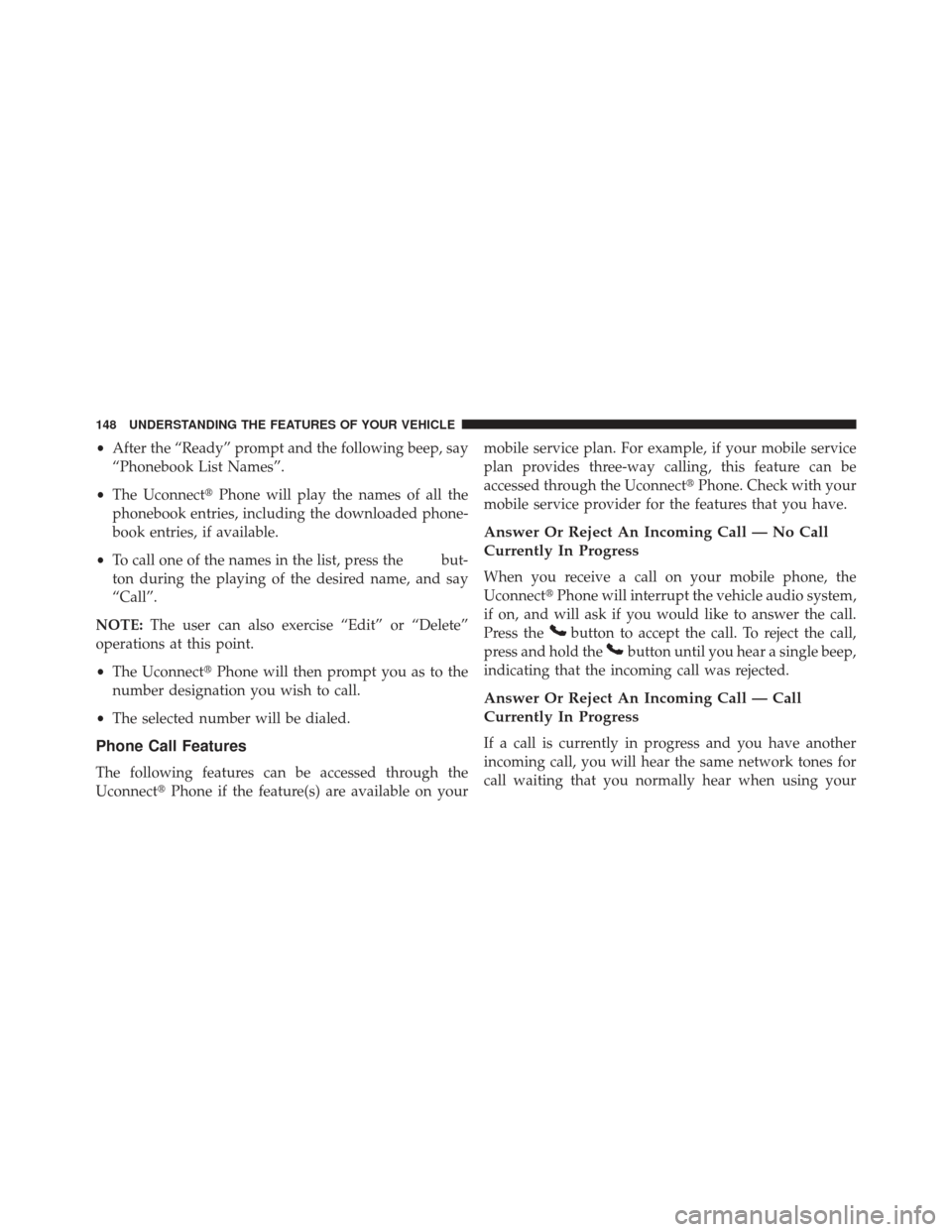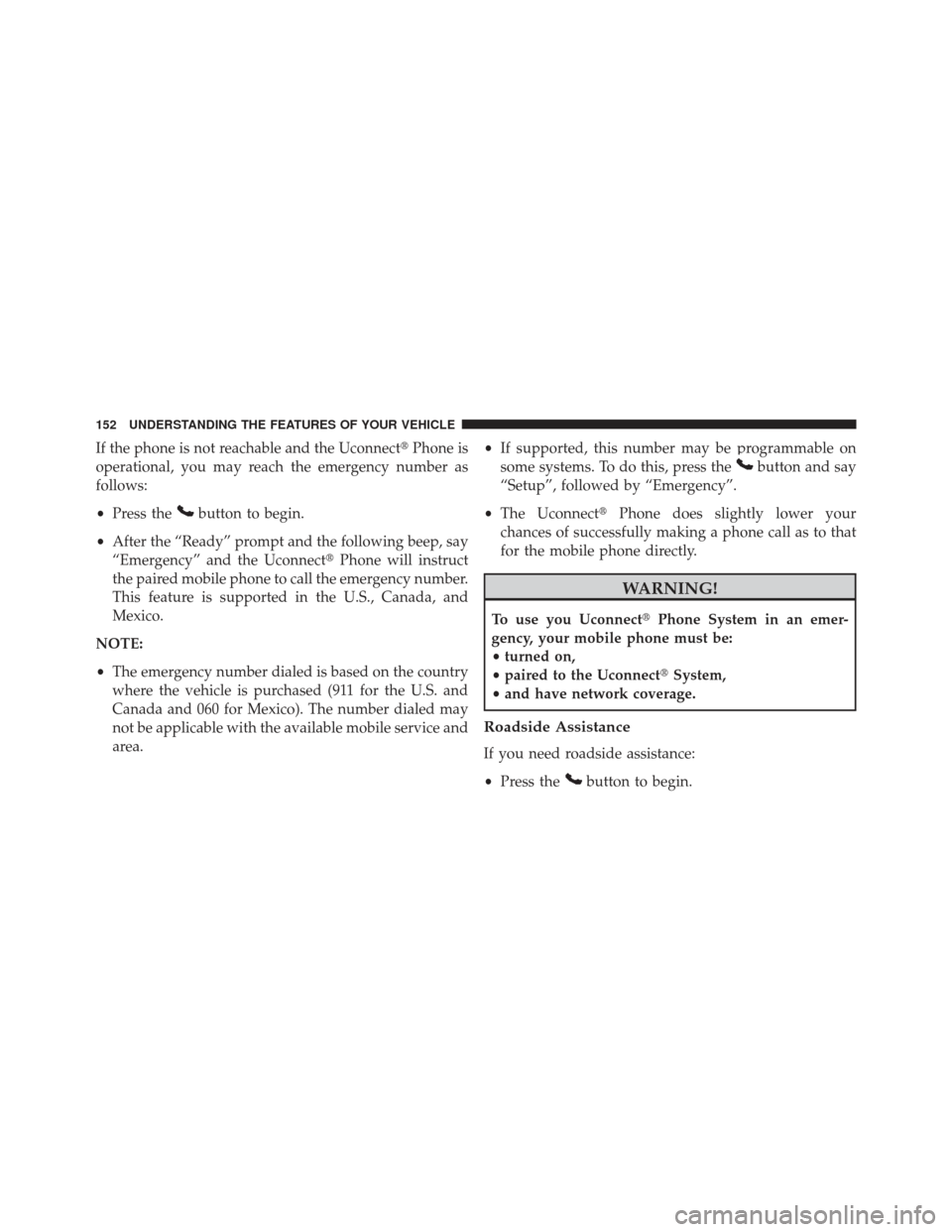Page 85 of 661

Maintaining Your Air Bag System
WARNING!
•Modifications to any part of the air bag system
could cause it to fail when you need it. You could
be injured if the air bag system is not there to
protect you. Do not modify the components or
wiring, including adding any kind of badges or
stickers to the steering wheel hub trim cover or the
upper right side of the instrument panel. Do not
modify the front bumper, vehicle body structure, or
add aftermarket side steps or running boards.
• It is dangerous to try to repair any part of the air
bag system yourself. Be sure to tell anyone who
works on your vehicle that it has an air bag system.
(Continued)
WARNING! (Continued)
•Do not attempt to modify any part of your air bag
system. The air bag may inflate accidentally or may
not function properly if modifications are made.
Take your vehicle to an authorized dealer for any
air bag system service. If your seat, including your
trim cover and cushion, needs to be serviced in any
way (including removal or loosening/tightening of
seat attachment bolts), take the vehicle to your
authorized dealer. Only manufacturer approved
seat accessories may be used. If it is necessary to
modify the air bag system for persons with dis-
abilities, contact your authorized dealer.
2
THINGS TO KNOW BEFORE STARTING YOUR VEHICLE 83
Page 86 of 661

Air Bag Warning Light
You will want to have the air bags ready to
inflate for your protection in a collision. The
Air Bag Warning Light monitors the internal
circuits and interconnecting wiring associated
with air bag system electrical components. While the air
bag system is designed to be maintenance free. If any of
the following occurs, have an authorized dealer service
the air bag system immediately.
• The Air Bag Warning Light does not come on during
the four to eight seconds when the ignition is first
cycled to the ON/RUN.
• The Air Bag Warning Light remains on after the four to
eight-second interval.
• The Air Bag Warning Light comes on intermittently or
remains on while driving. NOTE:
If the speedometer, tachometer, or any engine
related gauges are not working, the Occupant Restraint
Controller (ORC) may also be disabled. The air bags may
not be ready to inflate for your protection. Promptly
check the fuse block for blown fuses. Refer to the label
located on the inside of the fuse block cover for the
proper air bag fuses. See your authorized dealer if the
fuse is good.
Event Data Recorder (EDR)
This vehicle is equipped with an event data recorder
(EDR). The main purpose of an EDR is to record, in
certain crash or near crash-like situations, such as an air
bag deployment or hitting a road obstacle, data that will
assist in understanding how a vehicle’s systems per-
formed. The EDR is designed to record data related to
84 THINGS TO KNOW BEFORE STARTING YOUR VEHICLE
Page 116 of 661

Safety Checks You Should Make Inside The
Vehicle
Seat Belts
Inspect the belt system periodically, checking for cuts,
frays, and loose parts. Damaged parts must be replaced
immediately. Do not disassemble or modify the system.
Front seat belt assemblies must be replaced after a
collision. Rear seat belt assemblies must be replaced after
a collision if they have been damaged (i.e., bent retractor,
torn webbing, etc.). If there is any question regarding belt
or retractor condition, replace the belt.
Air Bag Warning Light
The light should come on and remain on for
four to eight seconds as a bulb check when the
ignition switch is first turned ON. If the light is
not lit during starting, see your authorizeddealer. If the light stays on, flickers, or comes on while
driving, have the system checked by an authorized
dealer.
Defroster
Check operation by selecting the defrost mode and place
the blower control on high speed. You should be able to
feel the air directed against the windshield. See your
authorized dealer for service if your defroster is inoper-
able.
Floor Mat Safety Information
Always use floor mats designed to fit the footwell of your
vehicle. Use only floor mats that leave the pedal area
unobstructed and that are firmly secured so that they
cannot slip out of position and interfere with the pedals
or impair safe operation of your vehicle in other ways.
114 THINGS TO KNOW BEFORE STARTING YOUR VEHICLE
Page 123 of 661

▫Adaptive Cruise Control (ACC) Menu .......238
▫ Display Warnings And Maintenance ........240
▫ Precautions While Driving With ACC .......243
▫ General Information ...................247
▫ Normal (Fixed Speed) Cruise Control Mode . . .248
▫ Forward Collision Warning — If Equipped. . . .250
� PARKSENSE� REAR PARK ASSIST — IF
EQUIPPED .......................... .254
▫ ParkSense� Sensors....................255
▫ ParkSense� Warning Display .............256
▫ ParkSense� Display....................257
▫ Enabling And Disabling ParkSense� ........260
▫ Service The ParkSense� Rear Park Assist
System ............................ .261▫
Cleaning The ParkSense� System..........261
▫ ParkSense� System Usage Precautions .......262
� PARKVIEW� REAR BACK UP CAMERA — IF
EQUIPPED .......................... .264
▫ Turning ParkView� On Or Off — With
Navigation/Multimedia Radio ............266
▫ Turning ParkView� On Or Off — Without
Navigation/Multimedia Radio ............266
� OVERHEAD CONSOLE ..................267
▫ Front Map/Reading Lights ..............267
▫ Courtesy Lights ...................... .268
▫ Sunglasses
Bin Door ...................269
� GARAGE DOOR OPENER — IF EQUIPPED . . .269
▫ Before You Begin Programming HomeLink� . . .271
3
UNDERSTANDING THE FEATURES OF YOUR VEHICLE 121
Page 136 of 661
The BSM system is designed not to issue an alert on
stationary objects such as guardrails, posts, walls, foliage,
berms, etc. However, occasionally the system may alert
on such objects. This is normal operation and your
vehicle does not require service.
Overtaking/ApproachingOvertaking/Passing
134 UNDERSTANDING THE FEATURES OF YOUR VEHICLE
Page 142 of 661

system at a time. The system is available in English,
Spanish, or French languages.
WARNING!
Any voice commanded system should be used only
in safe driving conditions following all applicable
laws, including laws regarding phone use. All atten-
tion should be focused on safely operating the ve-
hicle. Failure to do so may result in a collision
causing serious injury or death.
Uconnect� Phone Button
The radio or steering wheel controls (if equipped)
will contain the two control buttons (Uconnect �
Phone
button and Voice Command
button) that will enable you to access the
system. When you press the button you will hear the
word Uconnect� followed by a BEEP. The beep is your
signal to give a command. Voice Command Button
Actual button location may vary with the ra-
dio. The individual buttons are described in the
“Operation” section.
The Uconnect� Phone can be used with any Hands-Free
Profile certified Bluetooth� mobile phone. See the
Uconnect� website for supported phones. Refer to your
mobile service provider or the phone manufacturer for
details.
The Uconnect� Phone is fully integrated with the vehi-
cle’s audio system. The volume of the Uconnect� Phone
can be adjusted either from the radio volume control
knob or from the steering wheel radio control (right
switch), if so equipped.
The radio display will be used for visual prompts from
the Uconnect� Phone such as “CELL” or caller ID on
certain radios.
140 UNDERSTANDING THE FEATURES OF YOUR VEHICLE
Page 150 of 661

•After the “Ready” prompt and the following beep, say
“Phonebook List Names”.
• The Uconnect� Phone will play the names of all the
phonebook entries, including the downloaded phone-
book entries, if available.
• To call one of the names in the list, press the
but-
ton during the playing of the desired name, and say
“Call”.
NOTE: The user can also exercise “Edit” or “Delete”
operations at this point.
• The Uconnect� Phone will then prompt you as to the
number designation you wish to call.
• The selected number will be dialed.
Phone Call Features
The following features can be accessed through the
Uconnect� Phone if the feature(s) are available on your mobile service plan. For example, if your mobile service
plan provides three-way calling, this feature can be
accessed through the Uconnect�
Phone. Check with your
mobile service provider for the features that you have.
Answer Or Reject An Incoming Call — No Call
Currently In Progress
When you receive a call on your mobile phone, the
Uconnect� Phone will interrupt the vehicle audio system,
if on, and will ask if you would like to answer the call.
Press the
button to accept the call. To reject the call,
press and hold the
button until you hear a single beep,
indicating that the incoming call was rejected.
Answer Or Reject An Incoming Call — Call
Currently In Progress
If a call is currently in progress and you have another
incoming call, you will hear the same network tones for
call waiting that you normally hear when using your
148 UNDERSTANDING THE FEATURES OF YOUR VEHICLE
Page 154 of 661

If the phone is not reachable and the Uconnect�Phone is
operational, you may reach the emergency number as
follows:
• Press the
button to begin.
• After the “Ready” prompt and the following beep, say
“Emergency” and the Uconnect� Phone will instruct
the paired mobile phone to call the emergency number.
This feature is supported in the U.S., Canada, and
Mexico.
NOTE:
• The emergency number dialed is based on the country
where the vehicle is purchased (911 for the U.S. and
Canada and 060 for Mexico). The number dialed may
not be applicable with the available mobile service and
area. •
If supported, this number may be programmable on
some systems. To do this, press the
button and say
“Setup”, followed by “Emergency”.
• The Uconnect� Phone does slightly lower your
chances of successfully making a phone call as to that
for the mobile phone directly.
WARNING!
To use you Uconnect� Phone System in an emer-
gency, your mobile phone must be:
• turned on,
• paired to the Uconnect� System,
• and have network coverage.
Roadside Assistance
If you need roadside assistance:
• Press the
button to begin.
152 UNDERSTANDING THE FEATURES OF YOUR VEHICLE